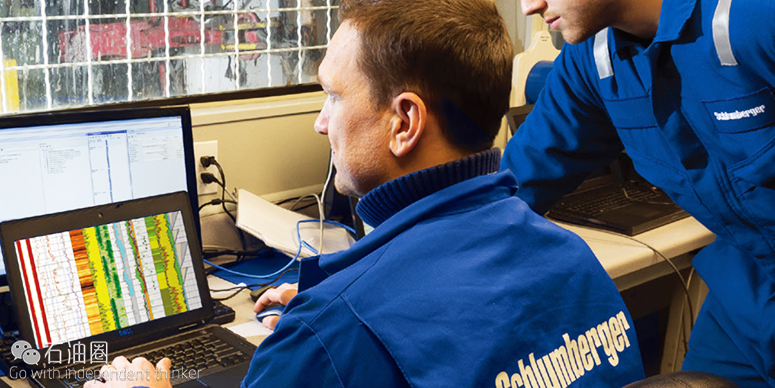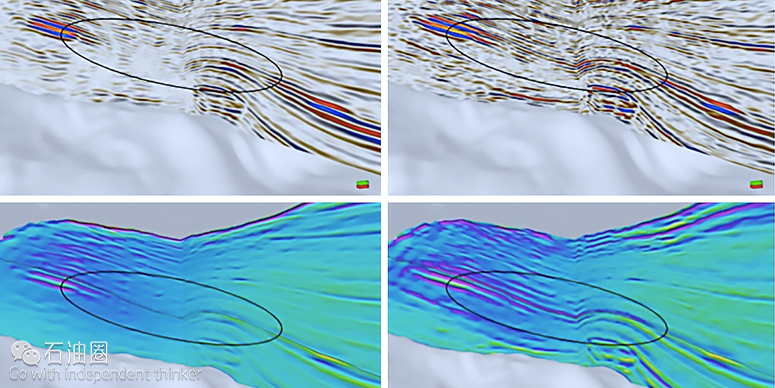Schlumberger has announced the launch of the Depth Domain Inversion Services. Schlumberger petrotechnical experts use the services to improve the reliability and consistency of seismic structural and quantitative interpretation in complex environments.
“Conventional seismic inversion in the time domain introduces inconsistency between the seismic images and the rock properties, especially where there’s a significant overburden, such as subsalt,” said Maurice Nessim, president, Schlumberger PetroTechnical Services. “With Depth Domain Inversion Services, customers receive more information derived from seismic data for reservoir characterization. This helps reduce uncertainty in complex reservoir environments, improve the confidence in prospect delineation, reservoir properties and volumetric calculations.”
Performing seismic inversion in the depth domain fully integrates the inversion with the imaging products to improve the reliability of estimating rock properties for reservoir characterization. This is done by correcting for depth space and dip dependent illumination effects during seismic amplitude inversion directly in the depth domain.
Depth Domain Inversion Services have been successfully applied in complex geological environments in North and South America.
In the Green Canyon area of the Gulf of Mexico, Schlumberger petrotechnical experts used a Depth Domain Inversion workflow in a complex subsalt area that was poorly illuminated. Reverse time migration produced seismic amplitudes adversely imprinted by the illumination effects. Executed in the Petrel E&P software platform, the workflow improved structural and quantitative interpretation, corrected illumination effects and provided a much sharper reflectivity image for better event continuity, more reliable seismic amplitudes and a higher fidelity acoustic impedance volume.
Conventional inversion inadequacies in complex geological settings
Conventional methods of amplitude inversion assume that amplitudes in the seismic image are correctly located and can be inverted to elastic parameters from which a true representation of rock properties can be derived. However, complex geology, combined with limitations imposed by surface seismic acquisition geometries, can lead to inadequate illumination of subsurface targets, which is detrimental to the amplitudes and phase of the migrated image.
Unfortunately, conventional amplitude inversion techniques cannot compensate for these amplitude and phase variations. Consequently, imprints in the seismic inversion of nongeological effects, including illumination, adversely affect the reliability of the estimated acoustic and elastic parameters. In turn, attributes derived from these parameters cannot accurately represent the properties of the corresponding lithology. An additional challenge to accurate amplitude inversion in complex geologic environments is that depth imaging is normally required to obtain a reliable image of the subsurface, whereas current amplitude inversion techniques are usually implemented in the time domain. This difference in approach between the imaging and inversion steps can further compromise the fidelity of the attributes derived from seismic inversion.
Accurate inversion performed in the depth domain
To improve consistency between structural imaging and rock property estimation, Schlumberger has developed Depth Domain Inversion Services. Our petrotechnical experts apply a new workflow for performing amplitude inversion directly in the depth domain. The Depth Domain Inversion Services workflow uses point spread functions (PSFs) to capture and correct for space-, depth-, and dip- dependent illumination effects resulting from the acquisition geometry and complex geology.
The PSFs are a representation of the spatially and depth-variant 3D wavelet embedded in the migrated image that replaces the 1D wavelet used in conventional amplitude inversion. The output from Depth Domain Inversion Services is a reflectivity image corrected for illumination effects, and if appropriate well data is available for calibration, a reflectivity image and the associated absolute acoustic impedance (AI) volume are also produced.
Depth Domain Inversion Services
Additional constraints that can be included in the objective function relate to the sparsity of the reflectivity model, lateral continuity of the output along the geological structure, and deviation from a prior low-frequency model. There is also the option to include more sophisticated physics to incorporate ghost effects or attenuation effects. Including such aspects within the inversion provides a mechanism to produce an even higher fidelity inversion output.
Using Depth Domain Inversion Services corrects for illumination effects caused by complex overburden and acquisition geometry to provide a much sharper reflectivity image with better event continuity, more reliable seismic amplitudes, and a higher-fidelity acoustic impedance volume. Our petrotechnical experts perform Depth Domain Inversion Services primarily for poststack acoustic impedance inversion after reverse-time migration (RTM), with extension to perform amplitude variation with offset (AVO) inversion of partial stacks after RTM as well as Kirchhoff depth migration.
Better illuminate complex reservoir structures through depth-domain modeling, imaging, and inversion
New Depth Domain Inversion Services deliver quantitative seismic interpretation directly in the depth domain to significantly increase your reservoir characterization accuracy in complex geological settings. By correcting for illumination effects, depth inverse modeling by our petrotechnical experts using Depth Domain Inversion Services reliably and consistently solves for acoustic rock properties from 2D and 3D seismic data. This advanced technique for high-resolution acoustic impedance is the basis for a more stable solution with higher resolution and higher fidelity than conventional AVO inversion techniques in complex environments.
Reduce uncertainty in your most challenging reservoir environments
The unique workflows of Depth Domain Inversion Services correct for depth-, space-, and dip-dependent illumination inadequacies to reduce uncertainty in defining petroleum system components, including migration pathways and trap and seal mechanisms. The resulting consistency achieved between structural imaging and rock property estimation gives you previously unavailable insight for your exploration campaigns.
Depth Domain Inversion Services provide much more reliable acoustic rock properties than possible with conventional methods of amplitude inversion. Depth inversion-based answers increase the accuracy of prospect delineation, reservoir properties determination, and volumetric calculations.
Extend the value of your seismic data from exploration to appraisal
Depth Domain Inversion Services employ integrated workflows to generate inversion models in the Petrel E&P software platform environment for actionable decision making during drilling operations.
APPLICATIONS
- Reservoir characterization in complex geological settings
- Determination of acoustic and elastic rock properties from 2D and 3D seismic data
- Seismic amplitude inversion correcting for space-, depth-, and dip-dependent illumination effects
BENEFITS
- Reduced uncertainty in even the most challenging reservoir environments
- Greater accuracy in defining petroleum system components, including migration pathways and trap and seal mechanisms
- Improved fidelity in the determination of acoustic properties, rock properties, and pore volume estimation for more reliable prospect delineation, reservoir properties, and volumetric calculations
- Extension of the value of seismic data from exploration to appraisal
FEATURES
- Amplitude inversion performed directly in the depth domain
- Point spread functions (PSFs) to handle space-, depth-, and dip-dependent wavelet variations
- Linear or full nonlinear Zoeppritz equations
- Dip-dependent reflectivity
- Preconditioning with steering filters
- Integrated workflows in the Petrel* E&P software platform



 石油圈
石油圈
